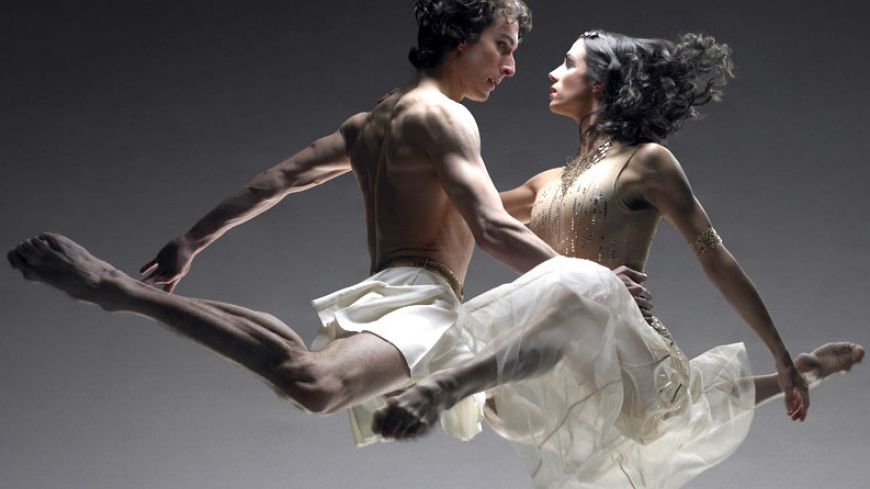
Staggeringly immense creative talents here combine to generate a masterpiece that is even greater than the sum of its extraordinary parts.
It was actually like watching a beautifully shot film, with a series of breathtaking stills that interspersed the rolling movement - but with that added edge of danger that is the preserve only of the live performance.
Such cinematic clarity was firstly achieved through the starkly apposite set design depicting clean lines of polished stone and marble, columns that had crumbled away at the base so they appeared incongruously to float from the sky.
The lighting and projection design layered onto this a myriad of moods and meanings, changing the setting not only geographically from Egypt to Rome and back again but also emotionally from sensuous delight, dark, intense, sexuality, menacing betrayal and murder and out into the light once more in Cleopatra’s final ascendancy to the heavens and her gods. The costume design filtered the leit-motifs of style that assimilated the dancers into this environment.
The inspirational composition by Claude-Michel Schonberg, who boasts Les Miserables and Miss Saigon as part of his back-catalogue, as with the best film scores, enhanced the dramatic narrative and emotional impact of each scene, capturing the underlying reality of each moment without intruding into consciousness. Artistic director David Nixon, through his choreography created an aesthetic balance that allowed all of these ‘background’ elements to emerge, composite and coherent, into the foreground.
Cleopatra was danced by Martha Leebolt, who incidentally was the winner of 2010 National Dance Award for Outstanding Female Performance, announced in January this year. Her dance ability, technique and skill goes without saying, but she also possesses that elusive quality of presence that means that you watch her even when she is still and all about her are dancing like demons.
The storytelling and communication of feeling was of a standard I have never witnessed in ballet before, where many gestures and expressions are necessarily exaggerated to compensate for the lack of dialogue. Here there was a realism and subtlety that is only seen in the finest of actors and this was true, not just for Leebolt, but for all the main protagonists.
Credit must therefore be given to Patricia Doyle, an actress and director of theatre and film who works extensively with the Northern Ballet in a variety of roles from drama consultant and acting coach to writer and on this production, co-director.
There were no performances, even among the ‘corps’, that were not of the highest possible standard. Kenneth Tindall as the god Wadjet, Tobias Batley as Mark Anthony, and Javier Torres as Julius Caesar all put in sublime performances, but there really was no weak link in this chemical chain that bonded to produce perhaps the finest example of a modern classical ballet that you could ever hope to see.
Cleopatra played 10-12 March

